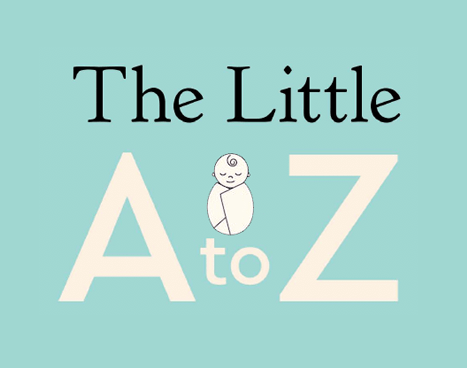Blog Layout
Business school meets parenting
Rachel Perks • Oct 16, 2021
Achieving greater gender equity in the home

Happy Late Thursday!
The mission behind this newsletter is to support working professionals in both their work and personal lives. An undertone to that mission is the on-going aim to increase gender equity in the corporate / public world. For many couples with children, this requires revisiting social norms around care and household responsibilities.
Work-life balance, as I presented it a while back in an Instagram post, hinges on three key areas of change: (i) corporate culture focused on face time, not measurable outputs; (ii) expectations on men and women when it comes to home life; and (iii) self-imposed pressures—whether men or women—to behave and be certain things when it comes parenting. All three changes are intimately related but it also useful to explore them, to a certain extent, separately.
One way I have been exploring these themes is through book reviews. Last Spring I did a 3-part series on Professor Lotte Bailyn’s seminal work, Breaking the Mold. Here we dove into decades of attempts by US organizations to develop new modes of working, ones considered today in colloquial terms, flexible arrangements or working-from-home. Prof Bailyn’s research from the 1990s still holds important value for our contemporary period, particular as the debate on ‘return to work’ intensifies post-pandemic.
Regardless though of whether you may be finding yourself returning to work on a regular basis, a hybrid basis or not at all, the demands of juggling work, home and parenting will remain constant. The laundry still needs to get done, the lunches still need to be made, school pick and drop offs will have to continue. And as we discovered in Breaking the Mold, the complexities of managing the household have only increased as many more couples are both choosing to be in the workforce. Unintentionally evidence points to the fact that without a proper discussion around who does what, women pick up the larger share of the household burdens. Why is this the case? Increasingly we are coming to understand how maternity leave or staying home with the baby impacts household management patterns. It is a period when so many daily childcare and household roles are gendererised (I think I just invented that verb) and often without any dialogue with partners.
Here women must take responsibility on equal terms for this reality. As Eve Rodsky demonstrates in her practical book, Fair Play, most women slowly but surely take, take, and take on more household responsibilities after childbirth; often without a discussion with their partners, and begrudgingly. No ones asks them to do more. It is just assumed they will because they are home with the child in those early months. This dangerous and slippery slope, as shown in many of the case studies Rodsky cites, culminates in a “trigger moment” months (if you are lucky) or years later in which the wife/mother is set off to volcanic proportions over what is seemingly a very small thing (trash not taken out, dishes left on the couch, etc). Rodsky describes her own ‘volcanic’ moment which had to do with a forgotten grocery item on a recent trip to the store and a curt text from her husband reminding her of that fact.
This trigger led to Rodsky’s remarkable mission: to build a practical system for couples to transparently manage the household.
So let’s dig in a bit more…
Fair Play at a Glance
Fair Play presents itself as a tool to help couples establish ‘more equity’ in the household. It is founded on the idea that time is equal for everyone, that we should have time to have projects outside our work and home life, and that communication is critical to establish a common understanding of how the ‘household’ is best managed.
At its heart are a deck of cards, 100 to be precise, which cover all aspects of managing a household. To her credit, Rodsky has not missed a single one —ranging from the benign every day lunch making and laundry to the more complex but infrequent estate planning and house purchasing. Through testing with cohorts, the deck has been refined into 5 categories: Home, Out, Caregiving, Magic and Wild.
The first steps in the Fair Play game is to go through the cards (ideally as couple) and establish how many actually apply to your household. Then it is to identify how many ‘cards you are holding’ versus your partner. The outcome of this first step is to establish a common understanding of who is doing what at present in the household with the objective to use these findings as a basis for discussion on re-balancing the deck.
I reached out to Rodsky to ask her which cards typically trip up couples the most. Here she offers her observation:
“The cards that can trip partners up the most are the daily grinds. Things that have to happen every day. We often have certain expectations of how these cards should be done, so it can be difficult to give these cards to our partners. It's important to establish a clear minimum standard of care (MSC). How long are dishes allowed to be left in the sink? Can all dishes go into the dishwasher, or do some need to be hand-washed? Do the sink and the counters need to be wiped down every night?”
What is very comforting about Rodsky’s book is that she does not leave couples hanging with a deck of cards but no process. Through the testing of her cards and the approach she has established some great guidance—ranging from couples agreeing on a minimum standard for which a task should be completed to giving you a sample invitation letter you can give your partner to initiate a first conversation. As she firmly points out, engaging partners in these types of conversations will not be easy. But the alternative—bitterness, distancing, possible divorce—are far worse. She encourages the person initiating the conversation to stick with it, even if the first few attempts end in disaster.
As Rodksy responded to me on this critical question of communication,
"Communication is a practice. It can be difficult, but it gets easier over time. If you are overwhelmed or don't feel comfortable bringing Fair Play to your partner, start slow. The system doesn't work if you don't have consistent check-ins. Try to set aside some time each night or once a week to sit down with your partner and check in. Set a timer, and bring some ice cream. Talk about how your day or week is going, what is coming up in the next few days, and how you are both feeling. Starting a practice of communication will help you become more confident when it comes time to introduce the Fair Play system. You will both feel more confident in being open with one another."
So I decided to try Fair Play out at home with my husband.
How did it go?
The Test
At first I was slightly skeptical about the benefits my husband and I could gain from the book. My husband is already very equity-focused—he regularly cooks, cleans and does bedtime. My frustration is that it is not on a regular schedule, something which I would prefer. So I was thinking, “Do I really want to rock the boat on process, not substance?” At the same time, I was also slightly apprehensive about how to even begin a conversation about who is doing what. Like many of us, I find that over the years I’ve done certain things around the house, mainly because I didn’t want to seem like a ‘nagger.’
The area where I saw the book’s utility was in its system of Conception, Planning and Execution (CPE). The idea here that one person is responsible for seeing a task through entirely. It does not mean you do not consult your partner along the way, but it does mean that at the end of the day, when there is no honey on the shelf, only one person is to blame (and that person knows it).
This felt very real to me. A recurring problem in our household is that we both like to pitch in, but not necessarily complete. Sometimes I will start a task, only to find that my husband takes over because he has more off-time to do it. But then he leaves it when he travels for work, and suddenly it is back on my plate. So the idea of CPE on tasks was very appealing to me.
When we sat down to establish what our full deck would look like, and who then does what, we whittled the 100 card deck down to 79. From there, in general it was a 2/3 me, 1/3 husband deck of cards for each of the categories. But, as equity implies, this didn’t necessarily mean that I was doing more. Some of the heavier and more complicated cards are fully my husband’s. And quite frankly, he does a lot of ones that I would never want to do in the first place. So in the end, after playing a first round, we didn’t really arrive at many trading or re-dealing of our individual decks.
The most important, practical outcome of the game for us was to establish a clear protocol around dinner prep, dinner clean up, lunch making and bedtime. This has always been our biggest trip-up point. So through the Fair Play exercise, it got us into a really good conversation about division of these tasks. Basically we agreed that whoever does dinner, also does clean up and lunch making. While the other does bedtime. Sounds slightly lopsided? Not if we then rotate on a daily basis. We’ve been a few weeks into this and it is really working well.
Parting Words
I’d like to close on two points. The first is whether you and your partner believe that gender equity relates to the home front. If so, then Rodksy’s book is a great starting point for re-adjusting roles. The second is that even if you have hired help, managing households is really tough as a working couple. If you are a woman and you are considering leaving the workforce to manage the home because it seems like the simplest solution (for who? I would ask), but you really don’t want to leave the workforce, then this book could be a great tool in your re-balancing toolbox. It is colloquial in its language, down to earth and practical. The hardest part is getting that first conversation and for that Rodsky provides great tips and even scripts to help ensure success.
If you check it out, let me know!!
The mission behind this newsletter is to support working professionals in both their work and personal lives. An undertone to that mission is the on-going aim to increase gender equity in the corporate / public world. For many couples with children, this requires revisiting social norms around care and household responsibilities.
Work-life balance, as I presented it a while back in an Instagram post, hinges on three key areas of change: (i) corporate culture focused on face time, not measurable outputs; (ii) expectations on men and women when it comes to home life; and (iii) self-imposed pressures—whether men or women—to behave and be certain things when it comes parenting. All three changes are intimately related but it also useful to explore them, to a certain extent, separately.
One way I have been exploring these themes is through book reviews. Last Spring I did a 3-part series on Professor Lotte Bailyn’s seminal work, Breaking the Mold. Here we dove into decades of attempts by US organizations to develop new modes of working, ones considered today in colloquial terms, flexible arrangements or working-from-home. Prof Bailyn’s research from the 1990s still holds important value for our contemporary period, particular as the debate on ‘return to work’ intensifies post-pandemic.
Regardless though of whether you may be finding yourself returning to work on a regular basis, a hybrid basis or not at all, the demands of juggling work, home and parenting will remain constant. The laundry still needs to get done, the lunches still need to be made, school pick and drop offs will have to continue. And as we discovered in Breaking the Mold, the complexities of managing the household have only increased as many more couples are both choosing to be in the workforce. Unintentionally evidence points to the fact that without a proper discussion around who does what, women pick up the larger share of the household burdens. Why is this the case? Increasingly we are coming to understand how maternity leave or staying home with the baby impacts household management patterns. It is a period when so many daily childcare and household roles are gendererised (I think I just invented that verb) and often without any dialogue with partners.
Here women must take responsibility on equal terms for this reality. As Eve Rodsky demonstrates in her practical book, Fair Play, most women slowly but surely take, take, and take on more household responsibilities after childbirth; often without a discussion with their partners, and begrudgingly. No ones asks them to do more. It is just assumed they will because they are home with the child in those early months. This dangerous and slippery slope, as shown in many of the case studies Rodsky cites, culminates in a “trigger moment” months (if you are lucky) or years later in which the wife/mother is set off to volcanic proportions over what is seemingly a very small thing (trash not taken out, dishes left on the couch, etc). Rodsky describes her own ‘volcanic’ moment which had to do with a forgotten grocery item on a recent trip to the store and a curt text from her husband reminding her of that fact.
This trigger led to Rodsky’s remarkable mission: to build a practical system for couples to transparently manage the household.
So let’s dig in a bit more…
Fair Play at a Glance
Fair Play presents itself as a tool to help couples establish ‘more equity’ in the household. It is founded on the idea that time is equal for everyone, that we should have time to have projects outside our work and home life, and that communication is critical to establish a common understanding of how the ‘household’ is best managed.
At its heart are a deck of cards, 100 to be precise, which cover all aspects of managing a household. To her credit, Rodsky has not missed a single one —ranging from the benign every day lunch making and laundry to the more complex but infrequent estate planning and house purchasing. Through testing with cohorts, the deck has been refined into 5 categories: Home, Out, Caregiving, Magic and Wild.
The first steps in the Fair Play game is to go through the cards (ideally as couple) and establish how many actually apply to your household. Then it is to identify how many ‘cards you are holding’ versus your partner. The outcome of this first step is to establish a common understanding of who is doing what at present in the household with the objective to use these findings as a basis for discussion on re-balancing the deck.
I reached out to Rodsky to ask her which cards typically trip up couples the most. Here she offers her observation:
“The cards that can trip partners up the most are the daily grinds. Things that have to happen every day. We often have certain expectations of how these cards should be done, so it can be difficult to give these cards to our partners. It's important to establish a clear minimum standard of care (MSC). How long are dishes allowed to be left in the sink? Can all dishes go into the dishwasher, or do some need to be hand-washed? Do the sink and the counters need to be wiped down every night?”
What is very comforting about Rodsky’s book is that she does not leave couples hanging with a deck of cards but no process. Through the testing of her cards and the approach she has established some great guidance—ranging from couples agreeing on a minimum standard for which a task should be completed to giving you a sample invitation letter you can give your partner to initiate a first conversation. As she firmly points out, engaging partners in these types of conversations will not be easy. But the alternative—bitterness, distancing, possible divorce—are far worse. She encourages the person initiating the conversation to stick with it, even if the first few attempts end in disaster.
As Rodksy responded to me on this critical question of communication,
"Communication is a practice. It can be difficult, but it gets easier over time. If you are overwhelmed or don't feel comfortable bringing Fair Play to your partner, start slow. The system doesn't work if you don't have consistent check-ins. Try to set aside some time each night or once a week to sit down with your partner and check in. Set a timer, and bring some ice cream. Talk about how your day or week is going, what is coming up in the next few days, and how you are both feeling. Starting a practice of communication will help you become more confident when it comes time to introduce the Fair Play system. You will both feel more confident in being open with one another."
So I decided to try Fair Play out at home with my husband.
How did it go?
The Test
At first I was slightly skeptical about the benefits my husband and I could gain from the book. My husband is already very equity-focused—he regularly cooks, cleans and does bedtime. My frustration is that it is not on a regular schedule, something which I would prefer. So I was thinking, “Do I really want to rock the boat on process, not substance?” At the same time, I was also slightly apprehensive about how to even begin a conversation about who is doing what. Like many of us, I find that over the years I’ve done certain things around the house, mainly because I didn’t want to seem like a ‘nagger.’
The area where I saw the book’s utility was in its system of Conception, Planning and Execution (CPE). The idea here that one person is responsible for seeing a task through entirely. It does not mean you do not consult your partner along the way, but it does mean that at the end of the day, when there is no honey on the shelf, only one person is to blame (and that person knows it).
This felt very real to me. A recurring problem in our household is that we both like to pitch in, but not necessarily complete. Sometimes I will start a task, only to find that my husband takes over because he has more off-time to do it. But then he leaves it when he travels for work, and suddenly it is back on my plate. So the idea of CPE on tasks was very appealing to me.
When we sat down to establish what our full deck would look like, and who then does what, we whittled the 100 card deck down to 79. From there, in general it was a 2/3 me, 1/3 husband deck of cards for each of the categories. But, as equity implies, this didn’t necessarily mean that I was doing more. Some of the heavier and more complicated cards are fully my husband’s. And quite frankly, he does a lot of ones that I would never want to do in the first place. So in the end, after playing a first round, we didn’t really arrive at many trading or re-dealing of our individual decks.
The most important, practical outcome of the game for us was to establish a clear protocol around dinner prep, dinner clean up, lunch making and bedtime. This has always been our biggest trip-up point. So through the Fair Play exercise, it got us into a really good conversation about division of these tasks. Basically we agreed that whoever does dinner, also does clean up and lunch making. While the other does bedtime. Sounds slightly lopsided? Not if we then rotate on a daily basis. We’ve been a few weeks into this and it is really working well.
Parting Words
I’d like to close on two points. The first is whether you and your partner believe that gender equity relates to the home front. If so, then Rodksy’s book is a great starting point for re-adjusting roles. The second is that even if you have hired help, managing households is really tough as a working couple. If you are a woman and you are considering leaving the workforce to manage the home because it seems like the simplest solution (for who? I would ask), but you really don’t want to leave the workforce, then this book could be a great tool in your re-balancing toolbox. It is colloquial in its language, down to earth and practical. The hardest part is getting that first conversation and for that Rodsky provides great tips and even scripts to help ensure success.
If you check it out, let me know!!
Share
Tweet
Share
Mail









